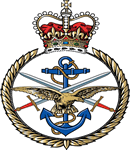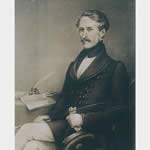Commemorated: | |||
Awards & Titles: | |||
Service Life:
Campaigns:
- The Peninsular Wars 1807-1814, Iberan Peninsula.
- Second Anglo-Sikh War 1848-1849, Punjab.
| Unit / Ship / Est.: 14th Dragoons |
| Action : Battle of Ramnagar |
The Battle of Ramnagar (sometimes referred to as the Battle of Rumnuggur) was fought on 22 November 1848 between British and Sikh forces during the Second Anglo-Sikh War. The British were led by Sir Hugh Gough, while the Sikhs were led by Sher Singh Attariwalla. The Sikhs repelled an attempted British surprise attack.
Detail :
His name appears in the Oxford Dictionary of National Biography referencing the work in 1891 book by Henry, M. Chichester, a portion of which is extracted below and repeated on Wikipedia and other sources.
"He was the eldest son of William Havelock of Ingress Park, Kent, and brother of Sir Henry Havelock and of Colonel Charles Havelock of the 16th Lancers. He was born on 23 January 1793, was educated at Charterhouse School and under a private tutor, and on 12 July 1810 was appointed ensign 43rd Light Infantry, in which he became lieutenant in 1812."
He served in the Peninsular War in the 43rd under Major-general Alten, distinguishing himself at the battle of Vera in October 1813. In his history of the Peninsular War, William Napier describes a critical occasion when the allied Spanish force was arrested by the heavy fire of two French regiments posted behind a strong line of abattis (felled trees with branches left on). Lt. William Havelock was sent to ascertain how the Spanish attack was progressing. According to Napier:
"His fiery temper could not brook the check, Taking off his hat he called upon the Spaniards to follow him, and putting spurs to his horse, at one bound cleared the abattis and went headlong amongst the enemy. Then the soldiers, shouting for "El Chico blanco" - "the fair boy" - so they called him, for he was very young and had light hair, with one shock broke through the French, and this at the very moment when their centre was flying under the fire of Kempt's skirmishers from the Puerto de Vare."
"He carried one of the colours of the 43rd at the passage of the Coa River in 1810, and was present in all the subsequent actions in which the Peninsula light division was engaged to the end of the Peninsular War, spending time as aide-de-camp to Major-general Charles, Baron Alten, commanding the division. At the combat of Vera in October 1813 a Spanish force was held in check by an abattis defended by two French regiments. Havelock, who had been sent to ascertain their progress, called on the Spanish to follow him, and went headlong among the enemy. The Spanish broke through the French, as their centre was under the fire of James Kempt's skirmishers.
Havelock was Alten's aide-de-camp at the battle of Waterloo and at the occupation of Paris. In 1818, he obtained a company in the 32nd Foot, and served with the corps in Corfu. Later he exchanged to the 4th Light Dragoons, with which he went to India. He was some time aide-de-camp to Sir Charles Colville when commander-in-chief at Bombay, and was military secretary to John Elphinstone, 13th Lord Elphinstone while Governor of Madras.
He became major 4th Light Dragoons in 1830, and exchanging into the 14th light dragoons, became lieutenant-colonel of that regiment in 1841. He commanded it in the field under Sir Charles Napier, and with the Bombay troops sent to reinforce Lord Gough's army during the Second Anglo-Sikh War. He fell mortally wounded at the head of his regiment in a charge on the Sikhs at the battle of Ramnagar, on the banks of the River Chenab, on 22 November 1848. Heavily wounded, after eleven of his troopers had been killed beside him, he was left for dead on the field.
Havelock married in 1824 Caroline Elizabeth, daughter of Acton Chaplin of Aylesbury, by whom he left a family."
His portrait image, along with a biography can be viewed: britishempire.co.uk.
Masonic :
| Type | Lodge Name and No. | Province/District : |
|---|---|---|
| Mother : | Lodge of Perfect Unanimity No. 150 E.C. | Madras |
Initiated | Passed | Raised |
17th December 1838 | 25th February 1839 | 9th December 1838 |
He was initiated into the Lodge of Perfect Unanimity No. 175 in 1838, listed as a Major stationed at Madras. He received a Grand Lodge Certificate along with 10 others on the 28th October, 1839, which means the date of his raising is incorrect, it having been dittoed from the previous line. The lodge still meets in Chennai under the number L150.
He then joined Neilgherry Lodge No. 622 at Ootacamund on the 18th May, 1840 when he was resident at Madras and listed a Major of the 4th Light Dragoons. This lodge was constituted 23rd December, 1835 but it was erased 4th June, 1862, its number being reused (today for Lodge of St. Cuthberga, Dorset).
Source :
The project globally acknowledges the following as sources of information for research across the whole database:
- The Commonwealth War Graves Commission
- The (UK) National Archives
- Ancestry.co.uk - Genealogy, Family Trees & Family History online
- ugle.org.uk - The records of the United Grand Lodge of England including the Library and Museum of Freemasonry
Additional Source:
- Founder Researchers : Paul Masters & Mike McCarthy
- Researcher : Bruce Littley

